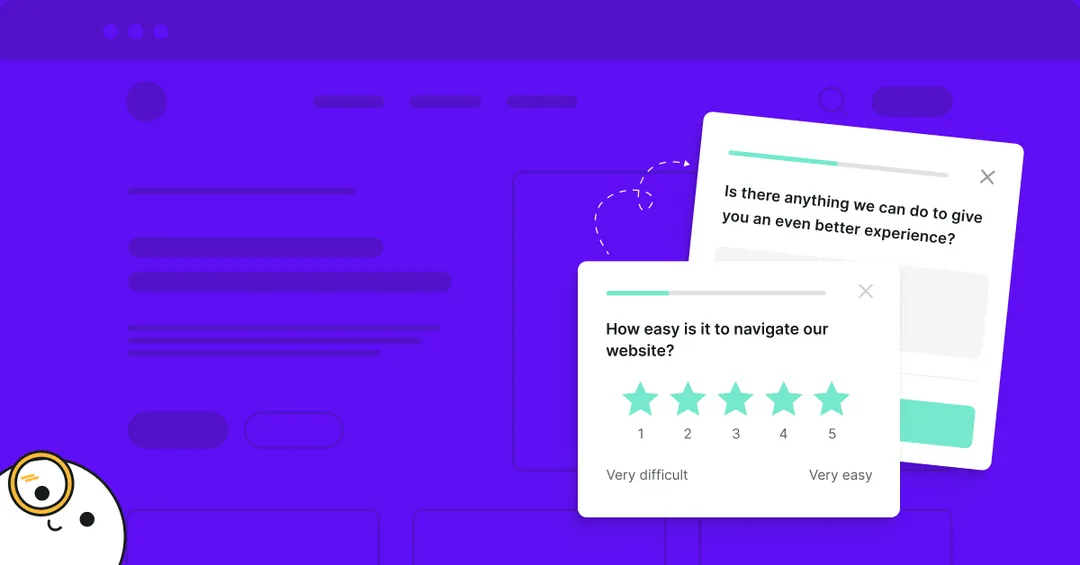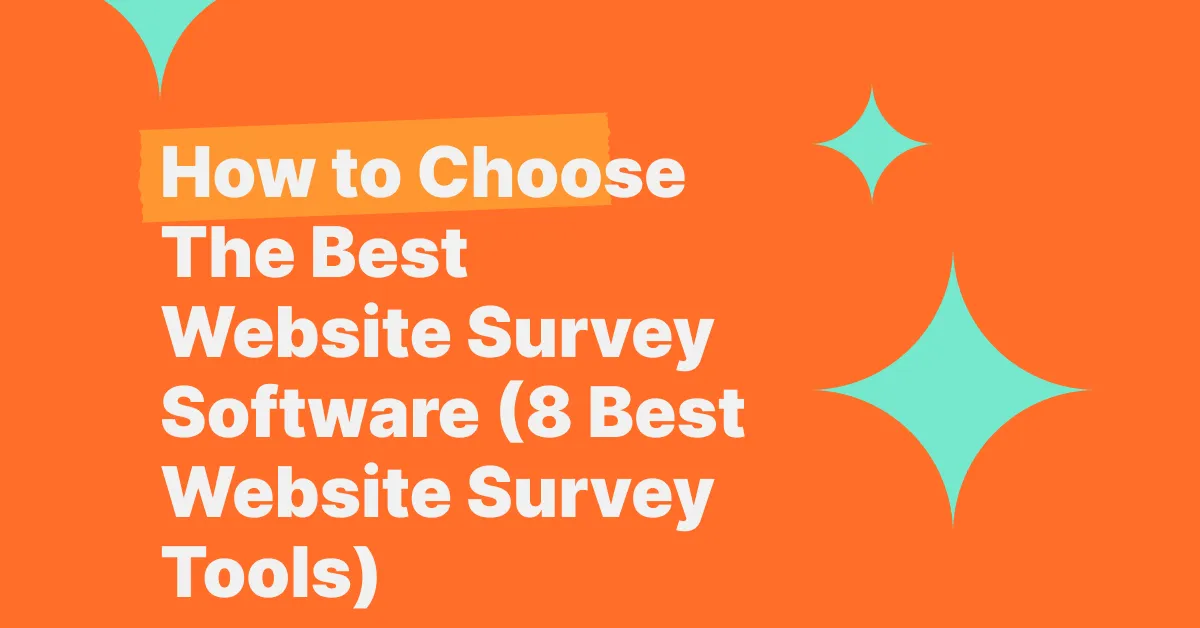Navigating a website shouldn't feel like you're trying to solve a Rubik's Cube. It should be a breeze, where everything just clicks—literally.
As we dive into 2025, the importance of a smooth, user-friendly website can't be overstated. Whether you're a business owner, a web designer, or just someone who's curious about the nuts and bolts of website usability, you've come to the right place.
This guide cuts through the jargon to bring you straightforward tips and insights on creating a website that's as easy to use as it is on the eyes. From layout to loading times, we'll cover the essentials that keep users happy and coming back for more. Let's make the web a better place, one user-friendly site at a time.
What is Website Usability
Website usability, often synonymous with web usability, refers to the ease with which a user can navigate and interact with a website. It's a measure of the user-friendliness of a web page and encompasses the simplicity of accomplishing desired tasks, the efficiency of the site's structure, and the satisfaction a user experiences when using the site.
Usability is a critical factor in website design, as it directly impacts the likelihood of a site visitor completing a conversion action, such as making a purchase, signing up for a newsletter, or requesting more information.
Good website usability means that a website is intuitive, meaning that users can navigate it without having to consciously think about the navigation process. It also means that the information presented is clear, the website is reliable and performs well across various devices and browsers. In essence, web usability is about creating a seamless, straightforward, and engaging online experience for users.

The Relationship Between User Interfaces and Website Usability
The user interface (UI) is the point of interaction between the user and the website. It includes the layout of the site, the design elements, the navigation menus, and any interactive components. The UI plays a pivotal role in website usability because it's the conduit through which users accomplish their tasks on the website. A well-designed user interface facilitates a smooth, effortless user journey, guiding users to their end goal with minimal confusion or frustration.
User interfaces that are cluttered, inconsistent, or non-intuitive can significantly hinder website usability. Conversely, a clean, consistent, and familiar UI can enhance usability by making it easier for users to learn the system quickly and use it efficiently. The relationship between UI and website usability is symbiotic; a good user interface enhances usability, and a focus on usability improves the user interface.
Five Key Principles of Website Usability
Website usability principles are guidelines that help designers create user-friendly interfaces. It is a fundamental concept that determines how easily users can navigate and interact with a website. Good website usability encompasses a range of factors, including the design, content, and functionality of a site, all of which contribute to a user's overall experience.Adhering to them, should result in an intuitive, user-friendly, and accessible website, that enables users to easily find information and complete tasks.
- Availability and Accessibility: A website must be available to users around the clock and accessible to everyone, including those with disabilities. This means ensuring the site is up and running and that it supports assistive technologies for users with various impairments.
- Clarity: The site should present information and options in a clear way so that users can easily understand what they can do and find what they are looking for without confusion.
- Learnability: A website should be easy to learn, allowing users to quickly become familiar with the interface and use it with proficiency on subsequent visits.
- Credibility: The website must be trustworthy, providing content that is accurate and reliable so that users feel confident in the information provided and the integrity of the site.
- Relevancy: Content and functionalities should be relevant to the users' needs and interests, ensuring that the website delivers value and maintains the users' engagement.
By focusing on these web usability guidelines, you can create websites that are efficient, effective, and satisfying to use.
Usability Testing: Ensuring a User-Friendly Website
Web usability testing is a critical component of the web design process, focusing on evaluating a website by testing it with real users. It's the primary way to learn how users interact with a website, identifying potential issues, and determining whether the site meets the intended user experience goals. Conducting usability tests allows you to gain insights into user behavior, preferences, and challenges they encounter while navigating the site.
This hands-on approach helps to ensure that the website is not only aesthetically pleasing but also functional and efficient from the user's perspective. By observing users as they complete specific tasks, you can see where they struggle and what aspects of the website are most intuitive. The feedback you get from usability testing is invaluable for making informed decisions to refine the website's design, improve its usability, and ultimately enhance user satisfaction.
Different Methods of Website Usability Testing
Website usability testing can be conducted using various methods, each offering different insights into how users interact with a website. Some of the common methods include:
- Moderated In-Person Testing: This traditional method involves a moderator working directly with a test participant, observing their behavior, and asking questions as they navigate the site. It provides immediate feedback and deep insights into user experiences.
- Remote Moderated Testing: Similar to in-person testing, this method uses video conferencing tools to conduct the test remotely, allowing for a broader range of participants while still providing real-time interaction between the moderator and the user.
- Unmoderated Remote Testing: Participants complete tasks on their own, typically using a specialized testing platform that records their screen and voice. This method allows for a larger number of tests across diverse user groups and can be more cost-effective.
- Card Sorting: Used in the early stages of web design, card sorting helps determine the most intuitive site structure by having users organize topics into categories that make sense to them.
- A/B Testing: This quantitative method involves showing two different versions of a webpage to different groups of users to see which performs better regarding usability metrics.
- Eye Tracking: By following and recording where and how long a user looks at different areas on a webpage, eye tracking provides insights into what attracts attention and whether the site's layout is effective.
- Website Usability Surveys and Questionnaires: Users provide feedback on their experience through written responses, which can be analyzed to understand user satisfaction and areas of a website that may need improvement.
- Heatmaps: Heatmaps are visual representations of where users click, move, and scroll on a webpage, offering insights into user behavior and highlighting which areas draw the most attention and interaction.
- First Click Testing: This method measures the usability of a website by analyzing where users first click when completing a task, which can indicate how easily they can navigate and find information.
- Session Recordings: Recordings of real user sessions show the actual actions taken by users, providing a clear picture of user navigation paths, actions, and potential sticking points on a website.
- Tree Testing: Also known as reverse card sorting, tree testing evaluates the findability of topics in a website's information architecture. Users are asked to find items using the site's navigation structure, typically without the design elements.
- Think Aloud Protocol: Users are asked to verbalize their thought process as they navigate through the website. This method provides insights into the user's thinking and decision-making process.
- Accessibility Evaluation: Testing a website for accessibility involves checking whether the site can be used by people with disabilities and ensuring compliance with web accessibility standards like the Web Content Accessibility Guidelines (WCAG).
By employing a combination of these usability testing methods, you can gather a comprehensive understanding of how users interact with your website, leading to more informed design decisions and a more user-friendly website overall.
How to Conduct Effective User Testing
It's important to follow a structured process to conduct effective user testing.
- Begin by defining clear objectives for what you want to learn from the testing.
- Recruit participants that match your target audience profile to ensure relevant feedback.
- Develop a testing plan that outlines the tasks participants will perform, and decide on the metrics you will use to measure usability.
When conducting the test, whether moderated or unmoderated
- Ensure that participants understand the tasks they are to perform but avoid leading them to the solutions.
- Create a comfortable environment for participants, and encourage them to think aloud to gain insights into their thought processes.
- Record the sessions to capture user behavior and feedback for later analysis.
After the test,
- Analyze the data collected to identify patterns and key usability issues.
- Prioritize these issues based on their impact on the user experience and the frequency with which they occur.
- Finally, iterate on the design by implementing changes based on the test findings and conducting follow-up tests to confirm that the changes have improved usability.
Utilizing a Website Usability Checklist for Comprehensive Evaluation
A website usability checklist is a valuable tool for systematically evaluating the various aspects of a website's design and functionality. The checklist should cover critical areas such as navigation, content, accessibility, responsiveness, visual design, interaction, and performance.
Check for clear and consistent navigation menus, legible typography, and appropriate use of color and contrast. Don’t forget to ensure that the website is accessible to users with disabilities. Confirm that the site is responsive across different devices and screen sizes and that interactive elements like forms and buttons are easy to use. Evaluate the website's performance, checking for fast load times and smooth animations.
Designing for Your Target Audience
Creating a website that resonates with your intended users requires a deep understanding of your target audience. It involves recognizing their preferences, needs, and challenges and reflecting them in every aspect of your web design.
A user-centered approach to web design enhances the user experience and contributes to higher engagement, satisfaction, and, ultimately, the success of your website. Let's see, what are the key strategies for aligning your website's design with the needs of your target audience.
Identifying and Understanding the Target Audience
The first step in designing for your target audience is to identify and understand who they are. This involves conducting market research, user interviews, and surveys to gather demographic and psychographic information.
Creating user personas can help represent the different user types that might use your service, product, or website. Understanding your audience's online behavior, preferences, and pain points enables you to design a website that appeals to them and addresses their specific needs.
Tailoring User Interfaces to Enable Users to Accomplish Basic Tasks
Once you have a clear picture of your target audience, the next step is to tailor the user interface to help them accomplish their basic tasks efficiently.
This means organizing content and features in an intuitive way, simplifying navigation, and ensuring that the most important tasks are easily accessible. The design should enable users to complete their goals with minimal effort and confusion, leading to a seamless and satisfying experience.
Importance of User Feedback in the Design Process
Incorporating user feedback into the design process is vital for creating a website that truly meets the needs of your target audience. Feedback can be gathered through usability testing, surveys, and direct user observations.
Regularly seeking and acting on feedback allows designers to make iterative improvements to the website. This practice helps fine-tune the user experience and demonstrates to users that their opinions are valued, fostering a sense of loyalty and trust.
The Role of Accessibility in Usability
Accessibility is a crucial component of website usability, ensuring that digital content is available and functional for all users, including those with disabilities. A truly usable website considers its audience's diverse needs, providing an inclusive experience that accommodates a wide range of abilities and assistive technologies. This section explores the importance of integrating accessibility into usability practices to create websites that are both easy to use and universally accessible.
Ensuring Compatibility with Screen Readers and Keyboard Navigation
One key aspect of web accessibility is ensuring that websites are compatible with screen readers and can be navigated using a keyboard alone. Users with visual impairments or motor disabilities often rely on these technologies to browse the internet. To support screen readers, it's important to use semantic HTML, provide alternative text for images, and ensure that dynamic content is announced properly. Similarly, keyboard navigation requires a logical tab order, visible focus indicators, and accessible controls. Ensuring compatibility with these assistive tools is essential for creating a website that is usable by everyone.
Adhering to Web Content Accessibility Guidelines (WCAG) for Users with Visual Impairments
Adhering to WCAG, is vital for serving users with visual impairments. These guidelines cover a range of recommendations, such as providing sufficient contrast between text and background, using resizable text that doesn't lose its functionality when magnified, and ensuring that all functionality is available without relying on color perception alone. Following these guidelines benefits users with visual impairments and improves the overall user experience by making content more perceivable and understandable for all users.
The Impact of Usability on Users with Diverse Needs
Usability profoundly impacts users with diverse needs, as it directly affects their ability to access and use a website effectively. When usability practices incorporate accessibility considerations, they contribute to a more inclusive web environment where users with disabilities can have positive and productive experiences. This includes designing for users with cognitive disabilities by providing clear instructions, consistent navigation, and avoiding time-limited tasks. By recognizing the broad spectrum of user capabilities and designing with all users in mind, websites can ensure that their content and services are truly usable for everyone, regardless of their individual needs.
Mobile Usability: Practical Usability Tips for Web Designers
It has become a critical aspect of web design in the era of smartphones and tablets. With a significant portion of internet traffic coming from mobile devices, it's imperative for websites to cater to their needs.
The Need for a Mobile Site
The rise of mobile has been meteoric, with more people accessing the internet on their smartphones than on desktop computers. This shift has made it essential for businesses and organizations to have a mobile-optimized site. It should load quickly, be easy to navigate with a finger, and present information clearly and concisely that fits smaller screens.
Ensuring that a website is mobile-friendly can greatly enhance accessibility and user satisfaction and is often a key factor in maintaining competitive advantage.
Differences between Mobile and Desktop Screens
Mobile and desktop usability differ in several ways due to the inherent characteristics of the devices. Desktop screens are larger and allow for more content to be displayed at once, while mobile screens are smaller and require more focused and streamlined content.
Desktop users typically interact with a website using a mouse and keyboard, which allows for precise actions, whereas mobile users rely on touch, which necessitates larger, more tappable areas.
These differences mean that a one-size-fits-all approach to web design is ineffective, and designers must consider the unique challenges and opportunities that smartphones and tablets present.
Designing for Touch Interactions and Appropriate Font Sizes
Designing for touch interactions involves creating interfaces that are finger-friendly. This includes making buttons and links large enough to be easily tapped and ensuring that interactive elements are spaced out to prevent accidental taps.
Additionally, font sizes need to be large enough to read without zooming in but not so large that they require excessive scrolling. Responsive design techniques allow font sizes to adjust to different screen sizes, ensuring legibility and enhancing the overall usability of the mobile site.
Common Website Usability Issues and How to Solve Them
Website usability issues can greatly hinder the user experience, leading to frustration and potentially driving visitors away from a website. Identifying and addressing these issues is crucial for maintaining a functional and user-friendly website.
Have a look at some of the most common web usability problems and provides solutions for web designers to implement.
Identifying and Fixing Broken Links, Search Function Issues, and Other Site Problems
Broken links, malfunctioning search features, and other technical problems can significantly disrupt the user experience. Regularly auditing the website to identify broken links is essential; tools like link checkers can automate this process.
Ensuring the search function delivers accurate and relevant results is also critical for user satisfaction. This might involve refining search algorithms or improving tagging and categorization within the site's content management system. Addressing these technical issues promptly helps maintain the integrity of the website and keeps users engaged.
Avoiding Common Design Mistakes
Common design mistakes, such as cluttered layouts, inconsistent typography, and confusing navigation, can make a website difficult to use and unappealing. To avoid these pitfalls, you should stick to best practices, such as embracing white space, using a consistent and readable font palette, and creating a logical navigation structure.
Additionally, ensure that interactive elements are easily identifiable and that the website's aesthetic aligns with its purpose and target audience. By focusing on a clean, intuitive design, websites can provide users with a more enjoyable and efficient experience.
Enhancing User Control and Freedom
Users appreciate having control over their interactions with a website, including the ability to easily undo actions or navigate freely. To enhance user control and freedom, you should include clearly labeled 'back' and 'cancel' options, confirmations for irreversible actions, and the ability to save progress in multi-step processes.
Allowing users to customize their experience, such as adjusting text size or choosing content preferences, can also contribute to a sense of control. By empowering users with these options, websites can foster a more accommodating and user-centric environment.

Test Web Usability with Survicate
When it comes to honing the usability of your website, there's no substitute for direct user feedback. Web surveys offer a straightforward and effective method to tap into your audience's thoughts and experiences. They serve as a bridge between you and your users, providing clear insights into what's working well and what could be improved. This user-centric approach to testing ensures that the changes you make are not just educated guesses but are informed by the actual needs and preferences of your visitors.
Incorporating web surveys into your website usability toolkit can be a game-changer. It allows you to ask targeted questions, gauge user satisfaction, and understand the challenges your visitors might face while navigating your site. The feedback collected through these surveys is invaluable, as it reflects the real-world usage of your website and highlights actionable areas for enhancement.
Ready to take the next step in website usability? Start by listening to those who matter most—your users. With Survicate, initiating this conversation is easy and risk-free. You're invited to explore the potential of web surveys with a free 10-day trial with all Business Plan features included. Sign up today, and begin the journey toward a more user-friendly website, informed by the voices of your visitors.








.webp)






.svg)

.svg)



